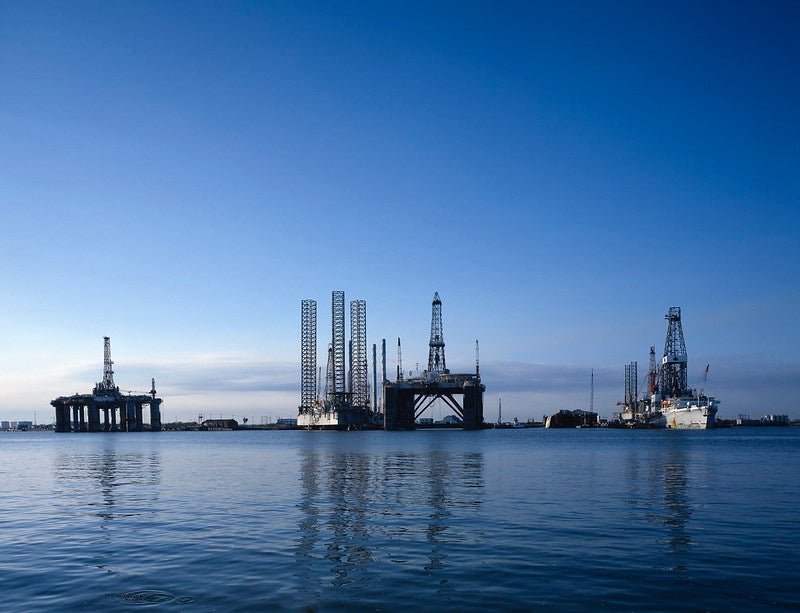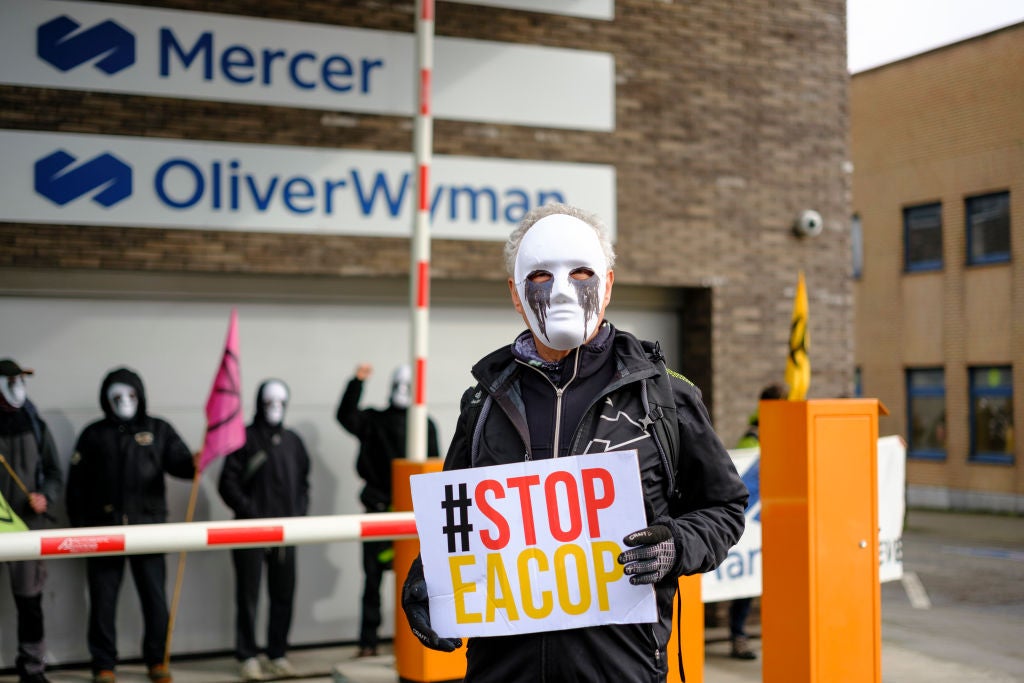
The offshore industry faces a number of challenges, from long-term economic viability to minimising its growing environmental footprint. But one of the more underrated challenges is that pertaining to data. While topside operations are, if anything, saturated with information they are unable to use – a McKinsey & Company report found that less than 1% of an average platform’s recorded data points were being made available to decision-makers – subsea projects face the opposite problem, with a significant lack of data available. The cost and logistical challenges of installing such sensors and data infrastructure subsea has long been an obstacle, as has the underwater environment, where traditional communication types such as 4G, Wi-Fi, radio, and satellite do not work.
Tackling this issue is Sonardyne, a UK-headquartered company that develops technologies to aid in subsea navigation, positioning, tracking, and imaging. The company’s SMART instrument aims to digitise subsea operations, by collecting data and completing analysis in-situ, before sending summaries back to operators on the surface.
The technology, which has already been deployed across a number of regions, could help companies to better understand their subsea infrastructure. Companies that are willing to embrace these kinds of technological innovations could prolong the lives and support the long-term viability of the offshore sector.
Digitising subsea operations
“SMART stands for Subsea Monitoring, Analysis, and Reporting Technology,” said Stephen Auld, global business manager of subsea asset monitoring at Sonardyne, explaining the technology. “Its main purpose is to record a variety of different variables, process them subsea, then transmit just a small statistical summary packet of information wirelessly to the sea surface.”
The sensor itself is a small, cylindrical device installed on subsea operations, that can be configured to record a number of phenomena, from the status of well-heads to the effectiveness of pipelines. Critically, the sensor has the capacity to analyse the data it collects, through a system known as the Advanced Data Acquisition and Processing System, which enables the sensor to process information in-situ, and send summaries to the surface. In an increasingly connected world, the need to collect and process data is of critical importance to many industries, and the subsea sector is no different.
“It’s very important,” said Auld. “As the life of many offshore fields is being extended, operators need to know exactly what movement may be occurring subsea with many of their assets.
How well do you really know your competitors?
Access the most comprehensive Company Profiles on the market, powered by GlobalData. Save hours of research. Gain competitive edge.

Thank you!
Your download email will arrive shortly
Not ready to buy yet? Download a free sample
We are confident about the unique quality of our Company Profiles. However, we want you to make the most beneficial decision for your business, so we offer a free sample that you can download by submitting the below form
By GlobalData“By making provisions for subsea asset monitoring data it can make the difference between continuing, pausing, or ceasing production,” he continued. “It can be that important.”
Sonardyne’s work is set to capitalise on an increasing desire for access to more data across the offshore industry. In the 2019 edition of its digital trends survey , Accenture noted that half of respondents in the upstream oil and gas sector were planning to invest in big data or artificial intelligence over the next three to five years, with 47% suggesting that a failure to invest in digitisation could lead to a loss of competitive advantage.
These dual desires, to modernise operations and improve financial performance, mean data-driven devices such as Sonardyne’s SMART sensor are well-positioned to see widespread adoption in the industry.
“This isn’t something that operators have had access to before in a single, easy to install, wirelessly communicating instrument,” said Auld. “Their other options have involved hardwiring multiple sensors, which involves tapping into power and communications systems and that’s something they don’t always want to or can do with older field developments.”
Small-scale independence and large-scale collaboration
Sonardyne’s devices meet a set of dual priorities: the need for individual devices to be capable of independent operations, and to be able to easily interface with third party systems.
“They can be installed down to 3,000m water depth with a standard remotely-operated vehicle and a simple clamp mount. That’s it,” said Auld of the SMART sensor, highlighting its physical robustness. “Then they can be left there for as long as they are needed. Their batteries can last up to six years, depending on how they are configured, and then it’s just a case of swapping them out.”
This principle feeds into several of Sonardyne’s other technologies, with its SMART Dunker and Autonomous Monitoring Transponders (AMTs), both of which require limited maintenance. The Dunker is used to recover data from other devices, such as the AMT, which conducts low-frequency monitoring over long periods of time, while the SMART sensor monitors high-frequency inputs over shorter periods of time. By developing several independent devices, all of which can interact with one another, without putting pressure on existing power or communications networks, Sonardyne is supporting asset integrity monitoring requirements in an efficient way.
“Sonardyne has been designing and supplying subsea instruments for almost 50 years. We know that it costs large amounts of money not only to install equipment subsea, but also to recover it for maintenance,” said Auld. “That’s why we design our subsea systems to be maintenance free, except for battery replacement. Even then, we use low-power electronics and the latest battery technology to maximise deployment life [in order] to save intervention costs for planned maintenance visits.”
This focus on specific technological innovation is enabling collaboration with other companies and organisations, a trend that is increasingly common in the offshore sector as firms look to secure the industry’s long-term survival. With robust technologies and a desire to collaborate, Sonardyne’s approach could help promote sustainability across the subsea industry.
“We measure, we monitor, and we deliver data to your trusted specialists, whether that’s your in-house engineers, third party fatigue analysts, or a specialist software provider,” announced the company in a blog post, dated 18 June. “We provide them with the sensor information they need to perform their modelling and analysis. This in turn will inform the operator what they need to know about their subsea infrastructure.”
Addressing challenges
Of course, practical concerns remain for the wider offshore industry. The UK’s Oil and Gas Authority (OGA) reported that the total operational expenses of the UK Continental Shelf reached $9.19bn in 2018, the highest since 2014, due in part to a number of major new fields coming on stream, such as Clair Ridge. The OGA also predicted that unit operating costs, measured in dollars per barrel and which had been falling due to improvements in production efficiencies made since 2014, could begin to rise again, increasing by up to 4% year-on-year to 2023 due to an expected decline in production in the basin.
Furthermore, the OGA reported that while 52% of operators saw a decrease in their unit operating costs in 2018, 52% also saw an increase in their total operational expenses.
While many of the costs that operators face relate to maintaining the significant and aging asset base in the North Sea, with lower production values than they’ve had in the past, companies can still make changes to aid in the integrity and efficiency of their operations.
Auld highlights the increased use of unmanned surface vehicles (USVs) in offshore projects as a key example:
“Perhaps, in the past, when a sensor has been installed in a very remote location, operators have been limited to how often they can go and collect the data using a manned vessel. But now that’s even becoming easier and cheaper and with less risk and environmental impact because they can use USVs.
“Being piloted from the shore, these USVs can go out and collect the data on their own. We’ve been performing this type of data collection for our clients already and we see more and more operators making use of these technologies.”
In many ways, Sonardyne’s technologies – remote sensor, underwater communications, and use of unmanned vehicles – are part of a broader move forward in the offshore industry as a whole as it looks to further improve its operational performance. By embracing technological innovation efficiency, offshore companies could become more streamlined and move towards meeting the environmental challenges inherent in the industry. Flexibility and ease of use of these technologies, highlighted by Auld, further this idea.
“Our SMARTs are easy to install and use, while removing a lot of the problems otherwise associated with installing subsea systems,” he said. “They’re also configurable and flexible – you can use them for monitoring many different parameters and they can be integrated with pretty much any type of sensor to gather and then send the relevant and required measurements to the surface.”






